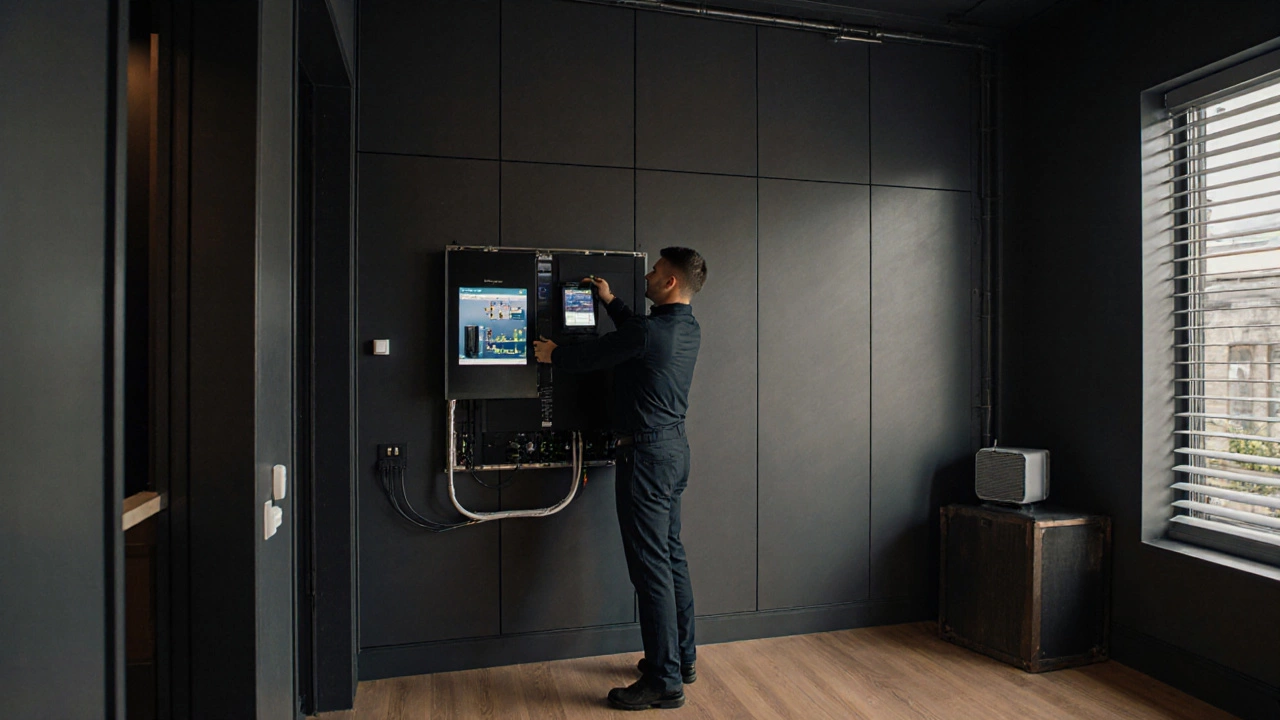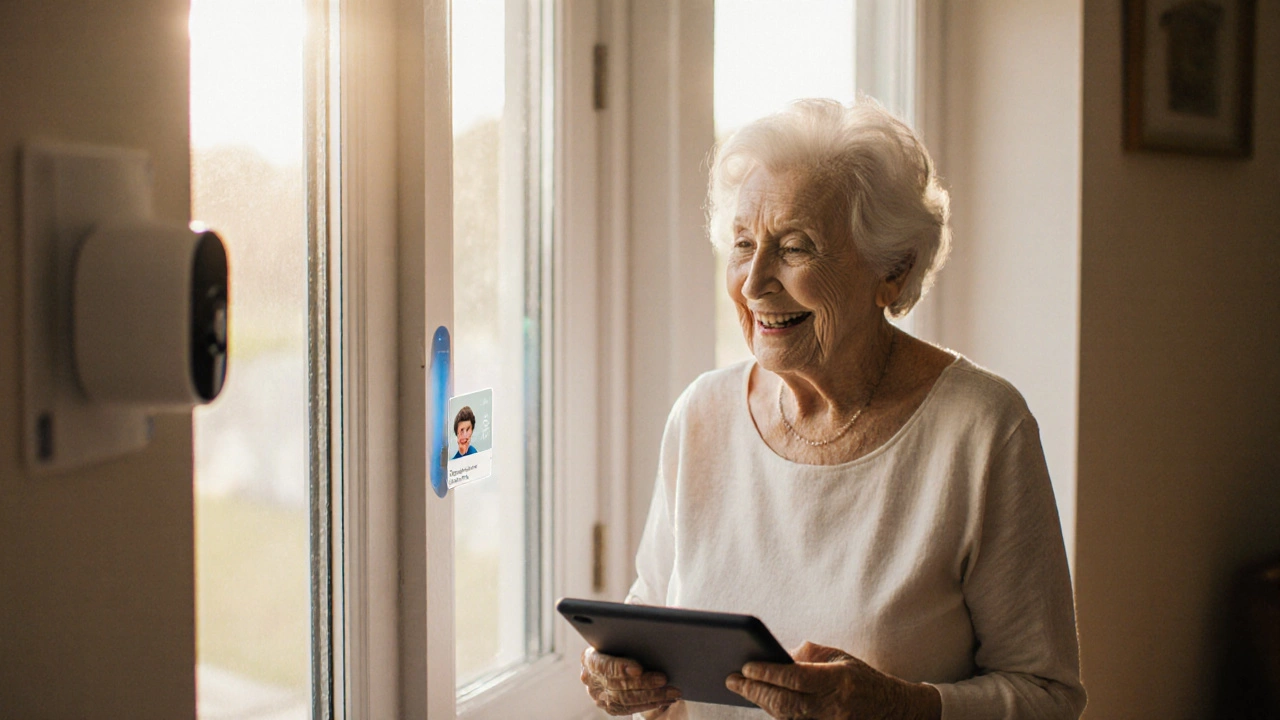Smart Home Term Selector
Which terms describe your setup?
Select all features you have in your home automation system
When people talk about a smart home, they’re not just referring to a house with a few fancy gadgets. They mean a space where lights, locks, thermostats, speakers, and even appliances work together-often without you lifting a finger. But if you’ve heard terms like "connected home" or "automated home" and wondered if they’re the same thing, you’re not alone. Many use these phrases interchangeably, but there are subtle differences that matter when you’re shopping, researching, or setting up your system.
What exactly is a smart home?
A smart home is a residence equipped with internet-connected devices that can be controlled remotely or programmed to respond automatically to triggers. Think of your thermostat adjusting the temperature when you leave for work, your lights turning on at sunset, or your door unlocking when your phone gets close. These aren’t just standalone gadgets-they’re part of a network, often managed through a single app or voice assistant like Alexa, Google Assistant, or Apple HomeKit.The core idea is automation and integration. It’s not enough to just have a smart bulb. A true smart home connects multiple devices so they talk to each other. For example, if your security camera detects motion, it can trigger your lights to flash and send you an alert. That’s the power of a system working as one.
Other names for a smart home
There are several terms you’ll hear in place of "smart home." Each carries a slightly different flavor, but they all point to the same basic concept: technology making your home easier, safer, or more efficient.- Automated home - This term focuses on the "automatic" part. It’s often used by people who care more about routines and scheduling than voice control. If your coffee maker turns on at 6 a.m. every day or your blinds close at 8 p.m., you’ve got an automated home.
- Connected home - This is the most common alternative. It highlights the network aspect-devices communicating over Wi-Fi, Zigbee, or Z-Wave. You’ll see this term a lot in product marketing, especially from companies like Google or Amazon. It’s less about intelligence and more about being linked.
- Intelligent home - This sounds more advanced, and it often is. It implies the system learns your habits over time. For example, your thermostat notices you always turn it down at 10 p.m. and starts doing it automatically. This term leans into AI and machine learning.
- Home automation - This one’s a bit broader. It’s often used as the umbrella term for the entire industry. You’ll see it in product names like "Home Automation Hub" or "Home Automation System." It’s the technical term professionals use.
Here’s how they stack up:
| Term | Focus | Common Use Case |
|---|---|---|
| Smart Home | Integration and responsiveness | Using voice commands to control lights, locks, and TV |
| Automated Home | Scheduling and triggers | Turn on porch light at sunset, turn off AC when you leave |
| Connected Home | Network and communication | All devices on the same Wi-Fi, controlled via one app |
| Intelligent Home | Learning and AI | Thermostat adapts to your routine, fridge suggests recipes |
| Home Automation | Technical system | Professional install of lighting, security, and climate systems |
Which term should you use?
It depends on who you’re talking to. If you’re shopping for products, "connected home" is what you’ll see on packaging. If you’re talking to an electrician or installer, they’ll say "home automation." If you’re explaining your setup to a friend, "smart home" is the easiest to understand.For search engines, all of these terms are treated as related. Google recognizes "smart home," "connected home," and "home automation" as synonyms in most contexts. But if you’re researching advanced features-like systems that learn your behavior-you’ll get better results searching for "intelligent home" or "AI home automation."

What’s not a smart home?
Not every tech-filled house is a smart home. A house with a smart TV, a Bluetooth speaker, and a fitness tracker doesn’t count. Those are just individual gadgets. A smart home requires:- Multiple devices that communicate with each other
- A central control point (app, hub, or voice assistant)
- Automation or remote control beyond simple on/off
For example, a microwave you can start with your phone isn’t smart home tech-it’s just a connected appliance. But if that microwave talks to your fridge to suggest meals based on what’s inside, and your oven preheats automatically for that recipe, now you’re in smart home territory.
Why does the name matter?
Using the right term helps you find the right products and services. If you’re looking for a system that learns your schedule, searching for "intelligent home" will lead you to AI-driven platforms like Nest or Ecobee. If you want a plug-and-play setup with minimal setup, "connected home" products from Amazon or Google are your best bet.It also affects cost. "Home automation" systems installed by professionals can cost thousands because they involve wiring, custom programming, and dedicated hardware. A "smart home" built with off-the-shelf devices might cost under $500 and be DIY-friendly.

Real-world examples
- Automated home: A family in Ohio uses a timer to turn on their porch light every evening at 7 p.m. and shuts off all non-essential devices at midnight. No voice control, no learning-just scheduled routines. - Connected home: A college student in Austin controls their lights, fan, and coffee maker from their phone while at school. All devices are on the same Wi-Fi and managed through the Google Home app. - Intelligent home: A retiree in Florida has a thermostat that notices she’s usually home on Tuesdays and adjusts the temperature accordingly. Her doorbell camera recognizes her grandson’s face and sends a special alert. The system adapts over time. - Home automation: A luxury home in California has a dedicated control panel, custom lighting scenes, motorized shades, and a whole-house audio system-all wired and programmed by a professional.What’s next for smart homes?
The line between these terms is blurring. Today’s "smart home" systems are becoming more intelligent. Voice assistants now predict what you’ll want before you ask. Security systems use facial recognition. Refrigerators track food expiration dates and order replacements.By 2025, over 60% of new homes built in the U.S. include some form of built-in automation, according to the National Association of Home Builders. That means "smart home" is no longer a luxury-it’s becoming standard.
Whether you call it smart, connected, automated, or intelligent, the goal is the same: to make your home work for you, not the other way around.
Is "smart home" the same as "home automation"?
They’re closely related but not identical. "Home automation" is the technical term for the system that makes things happen automatically. "Smart home" is the broader consumer term that includes automation, voice control, remote access, and learning features. Think of home automation as the engine, and smart home as the whole car.
Can I call my house a smart home if I only have a smart speaker?
Not really. A single smart speaker is a device, not a system. A smart home needs at least two connected devices that interact-like a speaker controlling lights or a thermostat. One gadget doesn’t make a home smart; a network does.
What’s the difference between a connected home and a smart home?
A connected home means all devices are linked to the same network. A smart home goes further-it uses that connection to make decisions. For example, a connected home has lights you can turn on with your phone. A smart home turns them on automatically when you walk in the door, based on your routine.
Are intelligent homes more expensive?
They can be. Intelligent homes use AI to learn your behavior, which requires more advanced sensors, processing power, and software. Devices like Nest Thermostats or Ecobee systems cost more than basic smart plugs because they analyze patterns over time. But you don’t need to go all-in-start with one intelligent device and add others later.
Do I need a hub for a smart home?
Not always. Many smart devices work directly with Wi-Fi and can be controlled through your phone or voice assistant. But if you use devices that rely on Zigbee or Z-Wave (like some sensors or locks), you’ll need a hub to connect them to your network. Hubs also improve reliability and reduce lag.
Can I upgrade my existing home to a smart home?
Absolutely. Most smart home devices are designed for retrofitting. You don’t need to rebuild your house. Start with a smart plug, then add a smart bulb or thermostat. Over time, you can expand to locks, cameras, and sensors. The key is choosing devices that work together-look for compatibility with Alexa, Google Home, or Apple HomeKit.

